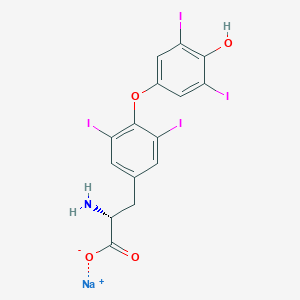-
Categories
-
Pharmaceutical Intermediates
-
Active Pharmaceutical Ingredients
-
Food Additives
- Industrial Coatings
- Agrochemicals
- Dyes and Pigments
- Surfactant
- Flavors and Fragrances
- Chemical Reagents
- Catalyst and Auxiliary
- Natural Products
- Inorganic Chemistry
-
Organic Chemistry
-
Biochemical Engineering
- Analytical Chemistry
- Cosmetic Ingredient
-
Pharmaceutical Intermediates
Promotion
ECHEMI Mall
Wholesale
Weekly Price
Exhibition
News
-
Trade Service
high temperature, sun exposure, people can't stand, in fact, plants do not like. But how do plants feel about changes in the outside world? How do you adjust yourself to make adaptive changes, protect yourself, and maintain normal growth? On July 15th, Nature-Communication published a research paper on the research team of The Min Group of the School of Life Sciences of Shandong Agricultural University online. They found that the plant biological clock core factor CCA1/LHY protein interacted with the SHB1 protein to maintain a balanced state of plant light response by regulating the expression of the PIF4 gene.
CCA1 is a key factor in the core oscillator of plant biological clock, which is involved in regulating plant growth and development, SHB1 is involved in regulating plant light signal transducement and seed endosperm development, and ultimately affects seed size, and PIF4 is a key negative regulatory factor in optical signal transduction.
previous studies have shown that positive regulatory factors such as photominitrine, after receiving light signals, rapidly degrade the PIF4 protein through ubimination, in order to promote the construction of plant light morphology. However, it was not clear whether there was a feedback adjustment mode for this degradation mechanism.
the model plant athropomorthic mustard as the carrier, the SHB1-CCA1/LHY complex was analyzed from a molecular, bio-chemical and genetic point of view to regulate the mechanism of PF4 gene expression under red light conditions. It was found that in the morning, the high-level expression of CCA1 by combining the initiation of the PIF4 gene, the biological clock signal integrated into the PIF4 mediated signal transducting pathway, and then recruit SHB1 to PIF4 gene promoter, specifically raise the PIF4 gene expression, maintain the rhythmic expression mode of the PIF4 gene, and to a certain extent weaken the light response of the plant, in order to maintain the balance of plant light form.
addition, the study also found that as daytime temperatures rise, SHB1 can enhance the thermal form of plants by increasing the expression of the PIF4 gene, helping to ensure the normal growth and development of plants under bright light and high temperature conditions.
the study revealed a feedback-regulating model that maintains a balanced plant light pattern, which helps maintain a moderate light and heat response during crop growth and development. (
)
relevant paper information:







